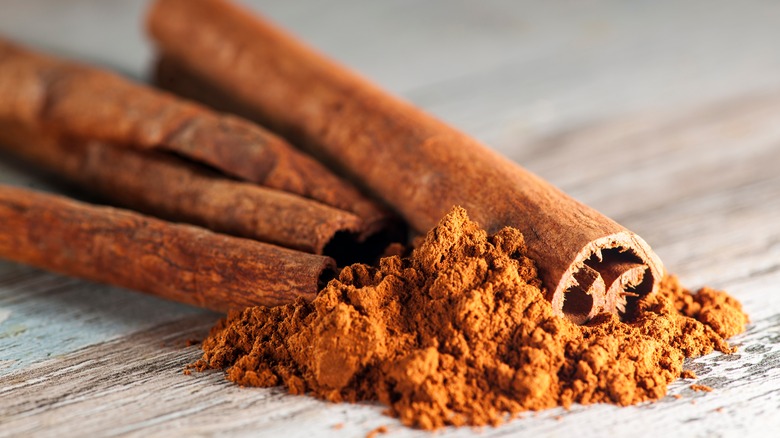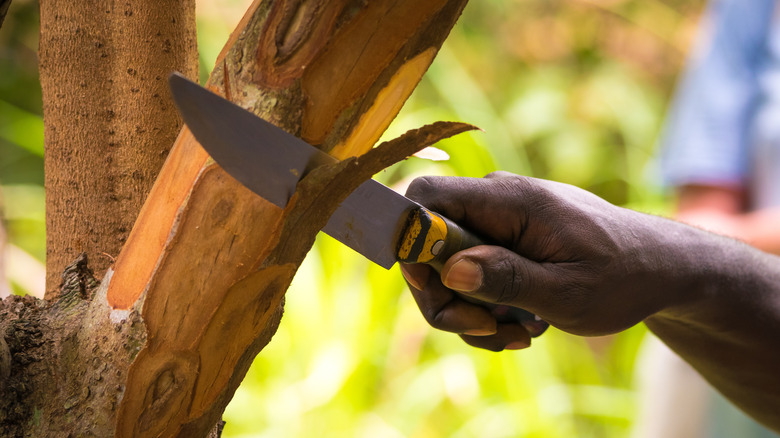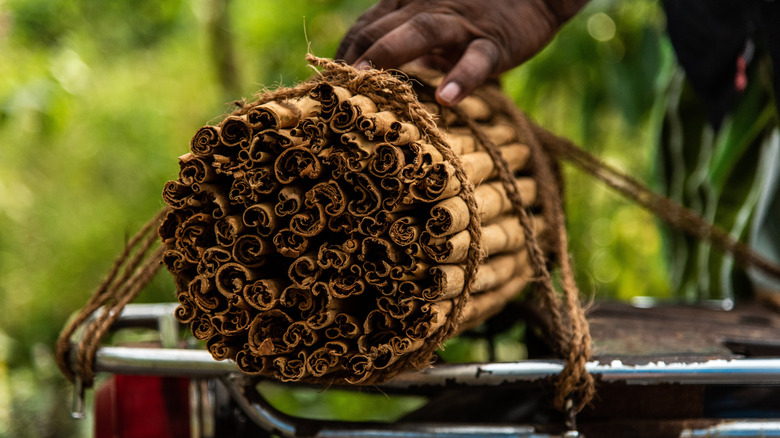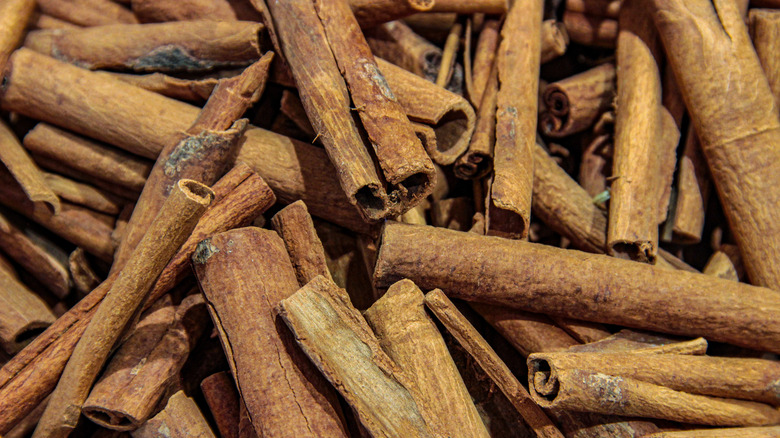Most Of The World's Cinnamon Comes From This Country
There is something special about cinnamon, the way it warms you up inside and makes your taste buds reminisce about apple pie. Cinnamon tastes like coziness and comfort, but once upon a time in history, it was the flavor of luxury. According to Proactive Health, cinnamon was so rare and valued in ancient Egypt that it was seen as a gift befitting kings. In the days of the Roman Empire, it was used for medicinal purposes, and subsequent research suggests that cinnamon may have limited antioxidant and antimicrobial properties. Most importantly though, it's delicious, and based on that fact alone, its ancient reputation feels absolutely warranted.
According to Britannica, cinnamon was once more valuable than gold. It was the most profitable of all spices traded by the Dutch East India Company, one of the most notable business endeavors in world history. DutchReview reports that the company, founded in 1602, was once valued at $78 million Dutch guilders, equivalent to $7.9 trillion today. That makes the Dutch East India Company more valuable than Apple, Microsoft, and Amazon combined. Taking all this into consideration, it's remarkable that cinnamon has become one of the most common spices in the supermarket, but thank goodness that's the case. We dread to imagine a life without cinnamon rolls.
The right climate for cinnamon
The curled-up cinnamon sticks you see in stores are made from the bark of trees in the Cinnamomum family. According to Penn State Plant Village, cinnamon trees are evergreen, and while they can reach heights up to 66 feet, they are usually kept at a smaller bush size on commercial farms. Unlike most other plants that we humans cultivate, cinnamon is not valued for either its flowers or the small berries that hang from its branches. The bark of these trees is where we find the good stuff, although it's worth noting that the leaves of the cinnamon tree are occasionally used as a spice themselves.
Cinnamon trees can only prosper under specific climate conditions. MasterClass notes that they are a tropical species, needing warm temperatures and lots of moisture to thrive. Britannica adds that the optimal time to harvest cinnamon bark is during a wet season, so as you can surely imagine, you won't find these trees growing in deserts or high-latitude regions. The world's leading producers of cinnamon are located closer to the equator, with southeast Asian countries leading the pack.
Indonesia grows almost half of the world's cinnamon
According to data from World Atlas, Indonesia is the world's predominant producer of cinnamon. In fact, the south Asian archipelago accounts for 43% of all the cinnamon grown worldwide, which generates an average of $85 million on a yearly basis. Further data provided by the Food and Agriculture Organization of the United Nations (FAO) indicates that Indonesia produced a stunning 91,242 tonnes of cinnamon in 2020, which is nearly 2,000 tonnes more than the world's second-largest grower of cinnamon, China.
World Atlas also reveals that most of the cinnamon harvested in Indonesia comes from the same spot — the slopes of Mount Kerinci, Indonesia's highest volcano, located on the island of Sumatra. According to the Smithsonian Institution Global Volcanism Program, Mount Kerinci is an active volcano whose most recent eruption occurred in 2018, and caused intermittent activity for another two years. According to One Degree Organics, the roads up the mountain are only wide enough to accommodate motorcycles, and the journey up and down the slope is arduous enough that many workers stay overnight during harvests. But while Indonesia grows more cinnamon than any other country, it is not the world's leading exporter, and it's more likely that your cinnamon comes from someplace else.
Most cinnamon exports come from this country
Indonesia doesn't just grow a lot of cinnamon — they also use a lot of it. FoodDive reports that Indonesia is the world's leading consumer of cinnamon, so most of its large domestic crop is destined for national distribution. If you buy cinnamon in America, it probably comes from another country, specifically Sri Lanka. According to PR Newswire, Sri Lanka is the primary global exporter of cinnamon, even though it only grows the fourth most out of any country. Indonesia, China, and Vietnam hold the top three positions, growing the most cinnamon in the world, but unless you live in one of those countries, it's more likely that your cinnamon is Sri Lankan.
This is actually quite appropriate, as Britannica reveals that cinnamon is native to Sri Lanka and the neighboring Malabar coast of India and Myanmar (a.k.a. Burma). Per The Culture Trip, Sri Lanka was a British colony from 1815 to 1948. At that time, the country was known as Ceylon, the namesake of Ceylon tea, which is used in many popular British tea blends. The nation's former title also left a mark on cinnamon. Penn State Plant Village reveals that one of the main species of the cinnamon tree, Cinnamomum verum, also goes by the name Ceylon cinnamon.



